Tomatoes are one of the stand-out vegetables growing in my garden. Knowing how to prune them properly for the greatest yield is important. My supply of homemade salsa, sauces and diced tomatoes will depend on it. You can learn how to prune tomato plants that are determinate and indeterminate with this easy tutorial giving you the best fruitful harvest.

I confess that tomatoes have long been my nemesis crop. The rainy summers of the Pacific Northwest can prove challenging for planting tomatoes, and then there is always treating tomato blight and the dreaded blossom drop.
If I'm being totally honest with you guys, it felt like a black mark on my homesteader's badge.
I consider myself a fairly decent gardener, and this, my friends, was a recipe for getting it right if it kills me. While that kind of made me crazy at times, it was a huge win for you. Because you get to skip what not to do and go straight to growing a year's worth of tomatoes with ease!
There is great satisfaction in going from pulling my hair out to admiring home-canned tomato sauce put up in my pantry and even storing green tomatoes for fresh eating months after the harvest. Plus, if you've never tried homemade tomato soup from your canned tomatoes, you, my friend, are missing out!
No more will you find me hucking rotten tomatoes across the fence for the livestock to nose through. Join me on the other side and learn how pruning tomatoes can greatly impact your harvest to produce fruit with the best overall yield.
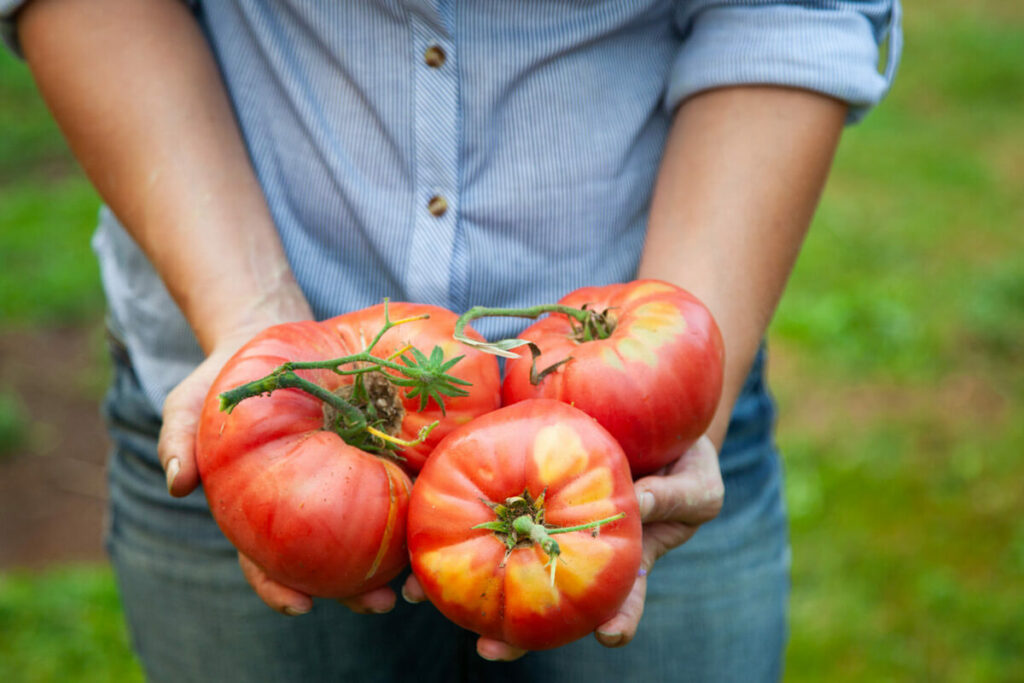
Pruning your tomato plants will increase your harvest, and I am all about an abundant harvest. When you prune tomato plants, it keeps the energy focused on producing the fruit (and larger fruit at that). Otherwise the energy goes to the foliage and takes away from the final harvest.
Pruning your tomatoes allows better air circulation and sun penetration, which benefits the plant and reduces the chance of diseases. I know all about blight living in the cool, wet environment of the Pacific Northwest. My fifteen-plus tips for planting tomatoes will give you more insight and success if you're struggling.
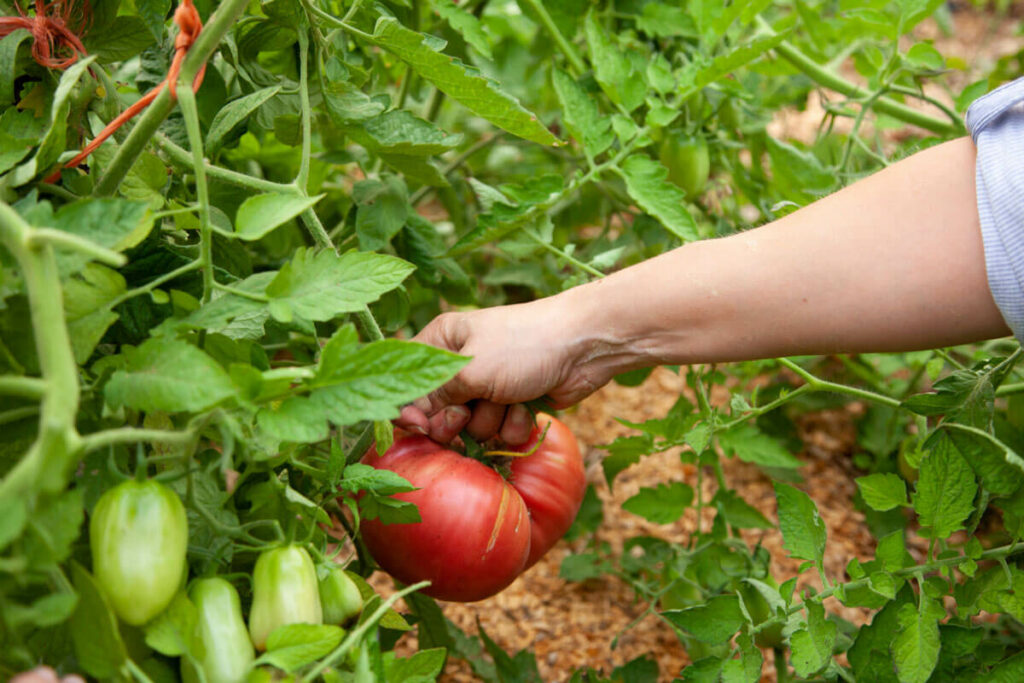

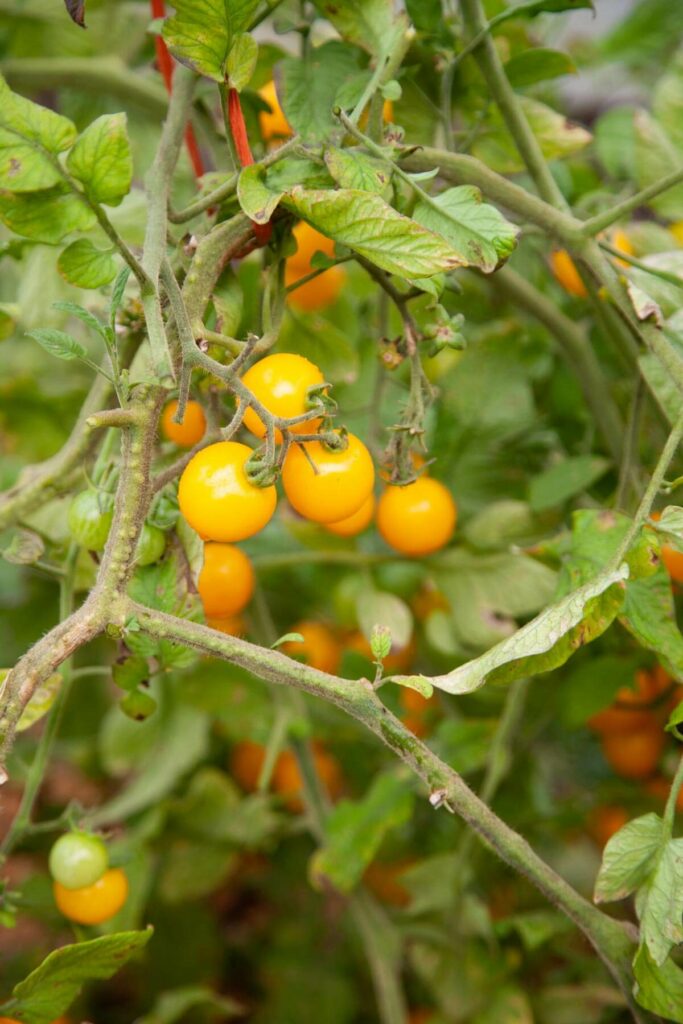
We grow all heirloom varieties in the garden, which makes seed-saving very valuable for future gardens. Once you decide what variety of tomatoes to grow, decide if you want indeterminate or determinate tomatoes. What’s the difference, you ask? Well, my friend, let me tell you.
Determinate tomato varieties are bushy and compact, with a blueprint determining their height. Determinate plants will set all their fruit at one time. They don’t require as much (if any) pruning because their size and productivity are already determined, hence the word “determinate.”
Indeterminate tomato varieties require pruning, staking and caging along the way to keep them growing and producing throughout the growing season. If you have a longer growing season, indeterminate varieties, when pruned regularly by managing the sucker shoots, will keep on giving you fruit until the first frost.
Once you know what you're going to plant, just know that you will prune indeterminate and determinate tomatoes differently so they will thrive and give you an abundance of fruit!
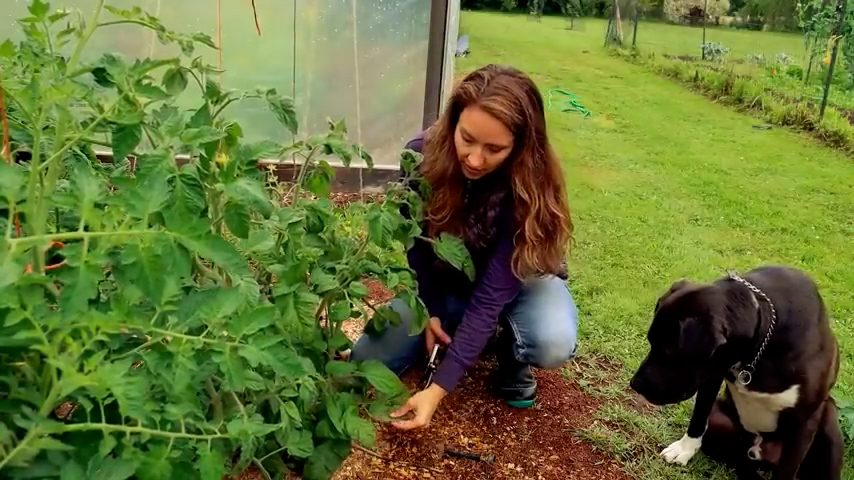
Timing is crucial when it comes to pruning tomato plants. Proper timing provides healthy growth and prevents any harm to the plant. The best time to prune determinate or bush tomatoes is early in the season before they start setting fruit. I get excited when I start to see blossoms and know the fruit is close behind.
Truth be told, I generally don't prune my determinate varieties and just let them do their thing. If you find you're dealing with blight or your plants are looking sickly, you may want to consider thinning them out a little.
On the other hand, indeterminate tomato plants should be pruned throughout the growing season to maintain their shape and allow for better airflow. Trellising indeterminate tomatoes is key to maintaining their wild growth. It's important to understand the specific requirements of your tomato variety and adjust your pruning schedule accordingly for the best fruit size.
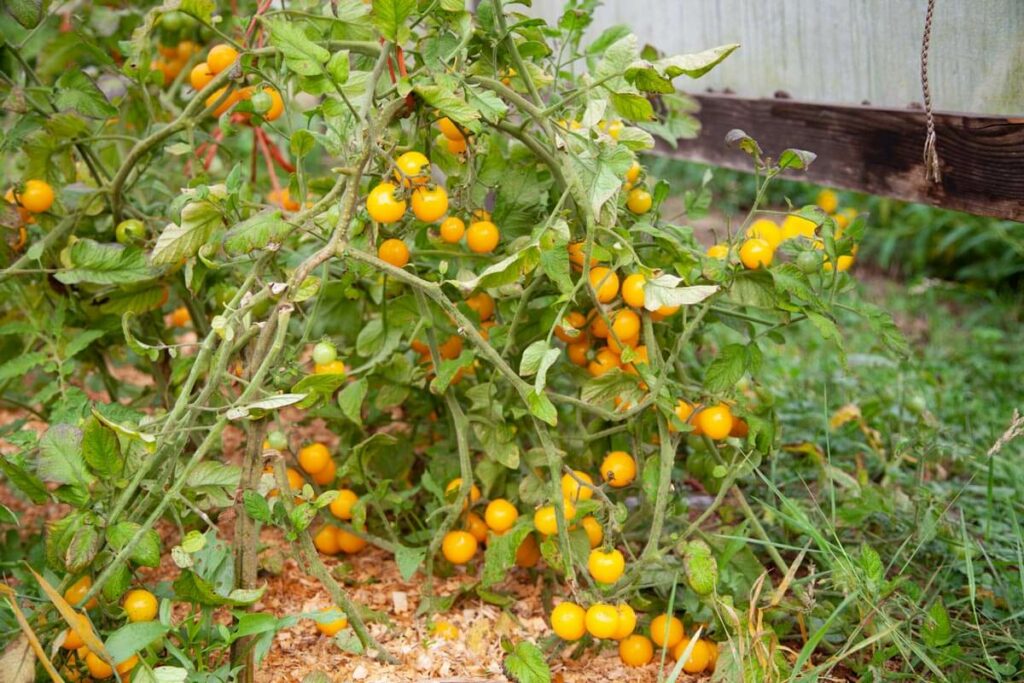
Pruning tomato plants is a delicate task that requires precision and care. Don’t be too hard on yourself if you trim off too much or too little when you're learning the process; they are pretty resilient.
Here are some common pruning mistakes to look out for to help you navigate the waters when you get to pruning:
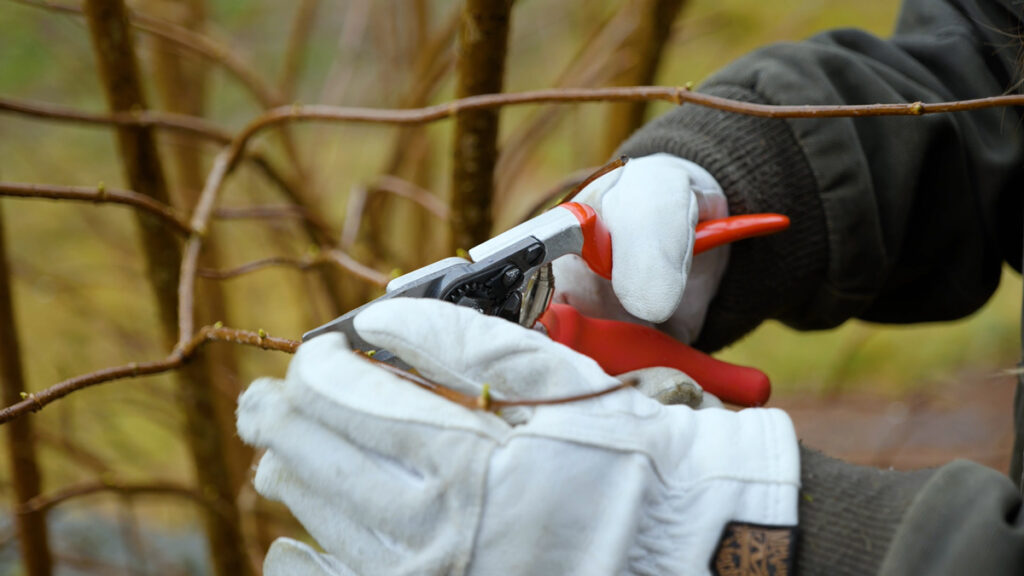
It doesn’t require many tools to prune your tomato plants, but these will make a difference in how the plant responds to pruning. Not to mention, you'll probably find many uses for these tools throughout the year around your homestead and garden.
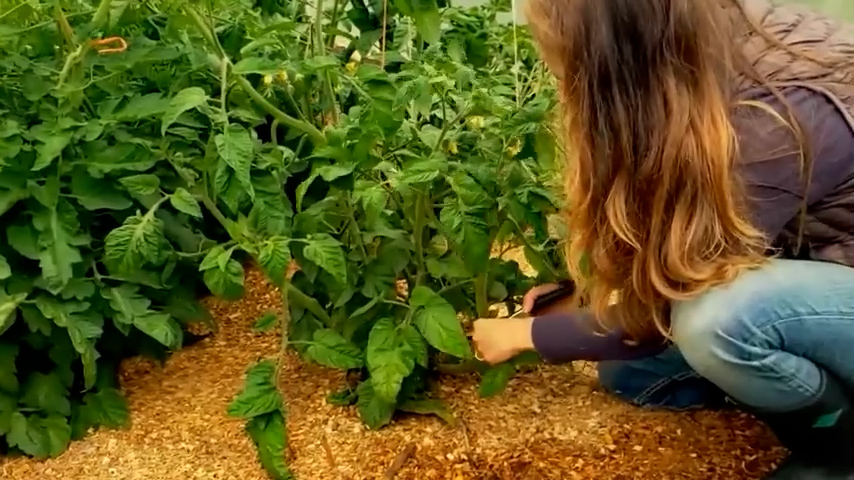
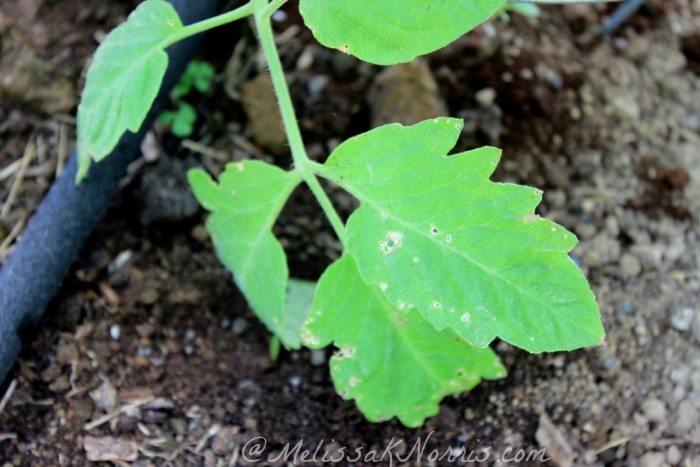
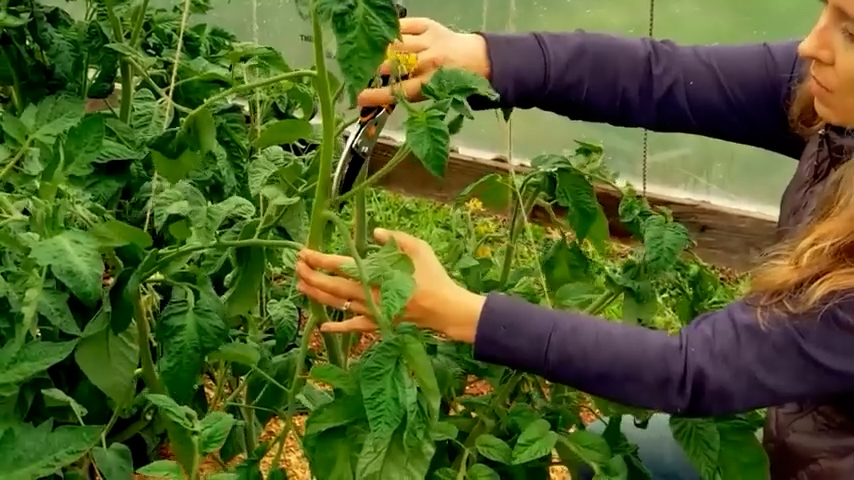
Pro-Tip: Don't leave your pruned leaves on the ground by your tomato plant. Discard them away from the garden so other plants are not susceptible to possible disease.
And that's it! You now have beautifully pruned tomato plants that should produce a large harvest. If you have any other questions or tips, be sure to leave them in the comments section below!
These tips work best for my cooler/wetter Pacific Northwest conditions, but I think you'll find that no matter where you live, they will help.
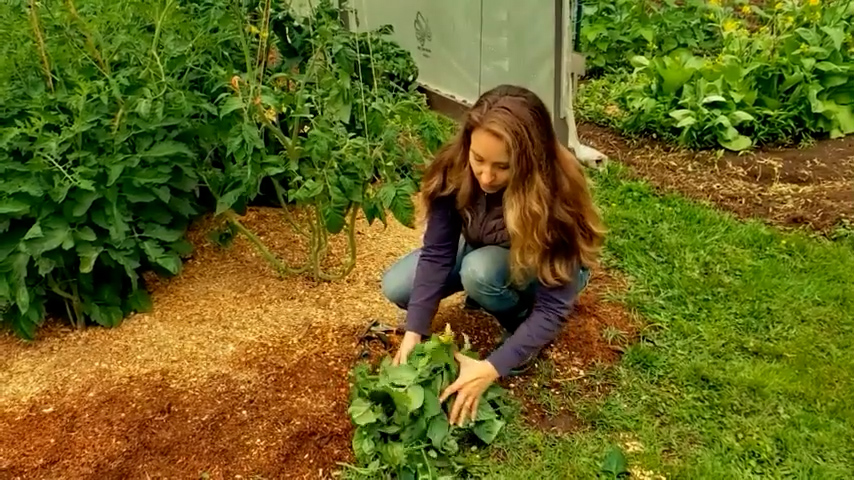
FAQ's
What is the difference between determinate and indeterminate tomatoes?
Determinate tomatoes are compact and bushy, with a predetermined height and setting fruit all at once. Indeterminate tomatoes continue to grow throughout the season, producing fruit over an extended period.
When is the best time to prune tomato plants?
Determinate tomatoes are best pruned early in the season before they start to set fruit. Indeterminate tomatoes are pruned throughout the growing season to maintain shape and allow for better airflow.
What are some common pruning mistakes to avoid?
Common pruning mistakes include removing too many leaves, cutting off healthy branches, pruning during the wrong time of day, and failing to distinguish between suckers and productive branches or flowers.
How do I prune tomato plants?
To prune tomato plants, start by removing any damaged or diseased branches, then selectively remove suckers and lower foliage to improve air circulation. Finally, prune for shape and size, ensuring a balanced structure.
How do I prune cherry tomato plants?
Pruning cherry tomato plants involves similar principles as other tomato varieties, focusing on maintaining airflow, removing excessive foliage, and encouraging fruiting. Be mindful not to prune too aggressively due to their higher tolerance for foliage.
How do I prune bush tomato plants?
Pruning bush tomato plants, such as determinate varieties, mainly involves maintaining shape and controlling growth. Remove damaged or diseased branches and selectively prune for adequate airflow, being careful not to remove too much foliage to impact fruit development.
What are some pruning tips for optimal results?
For optimal results when pruning tomato plants, use clean and sharp tools, prune when the plants are dry, avoid heavy pruning during hot weather, and adapt the techniques to suit your tomato variety and growing conditions.
How does air circulation contribute to tomato care?
Adequate air circulation is crucial for preventing diseases in tomato plants. Always make sure to use proper spacing between plants, use trellises or stakes for support, and maintain balanced watering, fertilizing, pest control practices, and proper pruning techniques for healthy and thriving tomato plants.
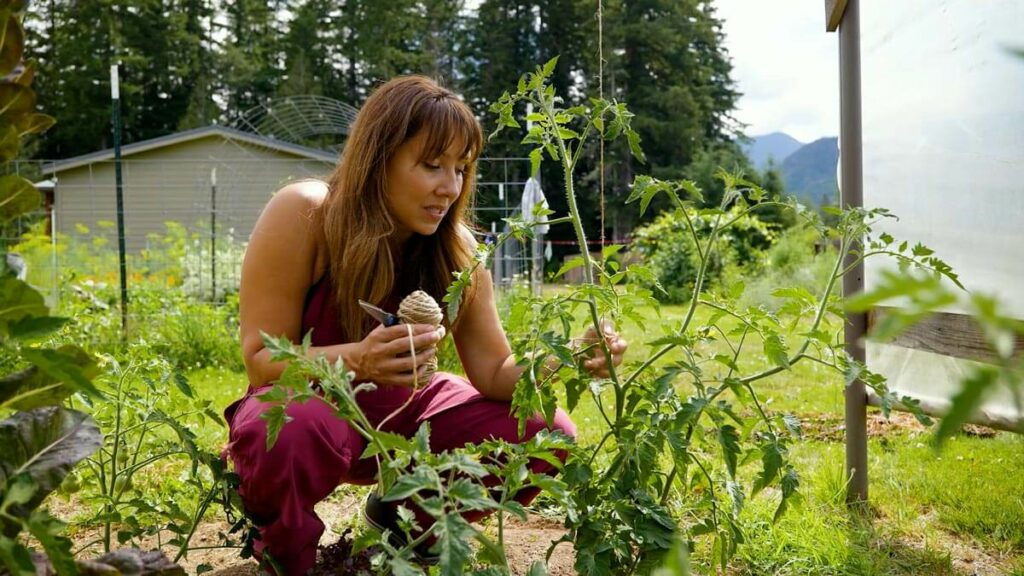
Pin this for later!
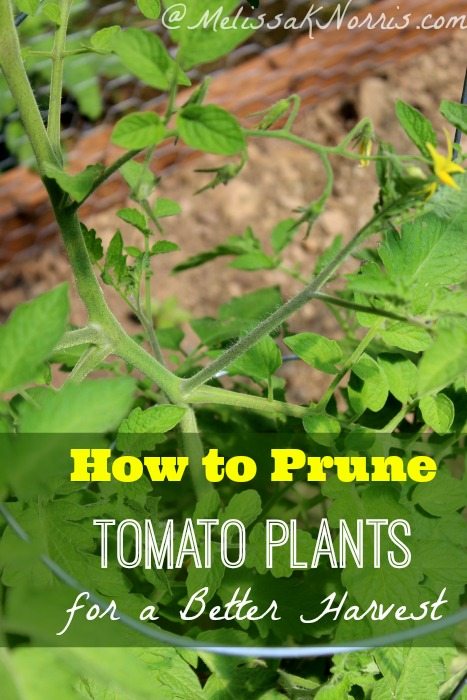
The post How to Prune Tomato Plants For a Better Harvest appeared first on Melissa K. Norris.

Securing a Big Harvest
I confess that tomatoes have long been my nemesis crop. The rainy summers of the Pacific Northwest can prove challenging for planting tomatoes, and then there is always treating tomato blight and the dreaded blossom drop.
If I'm being totally honest with you guys, it felt like a black mark on my homesteader's badge.
I consider myself a fairly decent gardener, and this, my friends, was a recipe for getting it right if it kills me. While that kind of made me crazy at times, it was a huge win for you. Because you get to skip what not to do and go straight to growing a year's worth of tomatoes with ease!
There is great satisfaction in going from pulling my hair out to admiring home-canned tomato sauce put up in my pantry and even storing green tomatoes for fresh eating months after the harvest. Plus, if you've never tried homemade tomato soup from your canned tomatoes, you, my friend, are missing out!
No more will you find me hucking rotten tomatoes across the fence for the livestock to nose through. Join me on the other side and learn how pruning tomatoes can greatly impact your harvest to produce fruit with the best overall yield.

Benefits of Pruning Tomato Plants
Pruning your tomato plants will increase your harvest, and I am all about an abundant harvest. When you prune tomato plants, it keeps the energy focused on producing the fruit (and larger fruit at that). Otherwise the energy goes to the foliage and takes away from the final harvest.
Pruning your tomatoes allows better air circulation and sun penetration, which benefits the plant and reduces the chance of diseases. I know all about blight living in the cool, wet environment of the Pacific Northwest. My fifteen-plus tips for planting tomatoes will give you more insight and success if you're struggling.



Determinate vs. Indeterminate Tomatoes
We grow all heirloom varieties in the garden, which makes seed-saving very valuable for future gardens. Once you decide what variety of tomatoes to grow, decide if you want indeterminate or determinate tomatoes. What’s the difference, you ask? Well, my friend, let me tell you.
Determinate tomato varieties are bushy and compact, with a blueprint determining their height. Determinate plants will set all their fruit at one time. They don’t require as much (if any) pruning because their size and productivity are already determined, hence the word “determinate.”
Indeterminate tomato varieties require pruning, staking and caging along the way to keep them growing and producing throughout the growing season. If you have a longer growing season, indeterminate varieties, when pruned regularly by managing the sucker shoots, will keep on giving you fruit until the first frost.
Once you know what you're going to plant, just know that you will prune indeterminate and determinate tomatoes differently so they will thrive and give you an abundance of fruit!
| Determinate Tomatoes | Indeterminate Tomatoes |
| Compact and bushy | Continuous growth |
| Predetermined height | Extended fruit production period |
| Sets fruit all at once | Fruit production over time |

When to Prune Tomatoes
Timing is crucial when it comes to pruning tomato plants. Proper timing provides healthy growth and prevents any harm to the plant. The best time to prune determinate or bush tomatoes is early in the season before they start setting fruit. I get excited when I start to see blossoms and know the fruit is close behind.
Truth be told, I generally don't prune my determinate varieties and just let them do their thing. If you find you're dealing with blight or your plants are looking sickly, you may want to consider thinning them out a little.
On the other hand, indeterminate tomato plants should be pruned throughout the growing season to maintain their shape and allow for better airflow. Trellising indeterminate tomatoes is key to maintaining their wild growth. It's important to understand the specific requirements of your tomato variety and adjust your pruning schedule accordingly for the best fruit size.

Common Pruning Mistakes
Pruning tomato plants is a delicate task that requires precision and care. Don’t be too hard on yourself if you trim off too much or too little when you're learning the process; they are pretty resilient.
Here are some common pruning mistakes to look out for to help you navigate the waters when you get to pruning:
- Removing Too Many Leaves – While removing some foliage for better air circulation is good, removing too many leaves can hinder the plant's ability to photosynthesize and produce energy. Try to balance foliage removal while keeping enough leaves for the plant's overall health.
- Using Dirty Tools – Always use clean and sharp tools to prevent the spread of diseases.
- Improper Spacing – When planting tomato plants, allow enough space between each plant to improve airflow. Crowded plants can create an environment for diseases to spread, especially determinate varieties that tend to be bushy. Pro Tip: The recommended spacing varies depending on the type of tomato, but generally, allow at least 24-36 inches between each plant.
- Cutting Off Healthy Branches – When pruning, it's easy to mistakenly remove healthy branches essential for the plant's growth and productivity. Be cautious when pruning, and make sure you only remove diseased, damaged, or unproductive branches.
- Pruning During the Wrong Time of Day – Pruning tomato plants during the hottest part of the day can cause stress and increase the risk of damage or disease. It's best to prune early in the morning or evening when temperatures are cooler.
- Confusing Suckers with Productive Branches – Suckers, the small shoots that grow between the main stem and branches of a tomato plant, need to be removed to grow healthier and produce more tomatoes. Try not to confuse suckers with productive branches or flowers. Properly identifying and removing suckers while leaving the productive parts of the plant intact is key to successful pruning. You can keep 3-4 suckers on the bottom part of the plant if it looks like you're getting good production. Keeping more than that will inhibit the quality growth of the fruit.
- Air Circulation – Adequate air circulation plays an important role in preventing diseases and promoting the growth of healthy tomato plants. Plant tomatoes twenty-four to thirty-six inches apart and prune them according to their variety.
- Trellises or Stakes – Using trellises or stakes for supporting your tomato plants helps keep them upright and enhances air circulation. You can train the branches through pruning to grow upright and keep them from resting on the ground. This way, they will get more sunlight and airflow, a win-win! I use a different form of trellising that works in my high tunnel. See how I trellis tomatoes here.
- Regular Monitoring – Keep an eye on your plants daily. Use good watering practices and look for unwanted pests and diseases. They can come on overnight, my friends, so be on the lookout and act quickly. You want to prevent and treat early blight for tomatoes and other diseases that can spread to other plants.
- Tomato Hornworms – Check the underside of the leaves for signs of eggs. If you notice an extreme loss in your leaves overnight, you may be dealing with tomato hornworms. Find them and pluck them off by using a blacklight in the dark (the hornworms glow and are easy to remove by hand). Pro Tip: Chickens love to eat hornworms!

Supplies Needed
It doesn’t require many tools to prune your tomato plants, but these will make a difference in how the plant responds to pruning. Not to mention, you'll probably find many uses for these tools throughout the year around your homestead and garden.
- Soaker Hoses – Investing in a soaker hose is a worthy investment for your tomato plants. I have found soaker hoses to be the best way to water vegetable gardens. Not only does it increase harvest, but it also eliminates disease. Other watering methods work for different vegetables, but my tomatoes were going to be soaked, not sprinkled or sprayed.
- Pruning Shears – I use my fingers to pinch the small suckers, but for the larger vines, I use pruning shears. If you can't easily pinch them off, use the shears; you don't want to leave a gaping wound by ripping it.
- Bucket or Wheelbarrow – The leaves and small branches are easily transported with a bucket or wheelbarrow to the compost pile. These will break down and enrich the soil for the next gardening season. Pro Tip: If your tomatoes are diseased with early or late blight, you do NOT want to compost them. Take them to the trash and get them off your property. You'll also want to sterilize your pruning sheers before pruning anything else to avoid the spread of fungus.



Pruning Tomatoes in Three Easy Steps
- Remove Damaged Branches and Lower Foliage – Start by pruning off all the lower leaves that are touching the soil. Use clean pruning shears (or your fingers) and remove them one by one. This provides better airflow for your tomato plants. Continue to carefully examine your tomato plants for any damaged or diseased branches. These can hinder plant growth and lead to the spread of diseases. Use pruning shears to remove the affected branches, making clean cuts just above a leaf node or where the branch meets the main stem.
- Selectively Remove Suckers – The second part of the plant you'll want to prune is the sucker shoots. They grow upright and will produce flowers and fruit, but too many of them compete with the main plant and will actually produce a smaller tomato and harvest. This is true for indeterminate tomato plants and heirloom varieties; removing the suckers helps channel the plant's energy into producing larger fruits. When pruning determinate plants (bushy), it’s best to leave most of the suckers intact, as they contribute to the overall plant growth and larger fruit production.
- Prune for Shape and Size – To make a well-balanced and structured tomato plant, prune for shape and size. Maintaining an open center or pruning the top of the plant at a manageable height is important to promote air circulation, sunshine, and easy access to fruits. Be cautious not to over-prune, which can stress the plant and reduce overall productivity.
Pro-Tip: Don't leave your pruned leaves on the ground by your tomato plant. Discard them away from the garden so other plants are not susceptible to possible disease.
And that's it! You now have beautifully pruned tomato plants that should produce a large harvest. If you have any other questions or tips, be sure to leave them in the comments section below!
These tips work best for my cooler/wetter Pacific Northwest conditions, but I think you'll find that no matter where you live, they will help.

FAQ's
What is the difference between determinate and indeterminate tomatoes?
Determinate tomatoes are compact and bushy, with a predetermined height and setting fruit all at once. Indeterminate tomatoes continue to grow throughout the season, producing fruit over an extended period.
When is the best time to prune tomato plants?
Determinate tomatoes are best pruned early in the season before they start to set fruit. Indeterminate tomatoes are pruned throughout the growing season to maintain shape and allow for better airflow.
What are some common pruning mistakes to avoid?
Common pruning mistakes include removing too many leaves, cutting off healthy branches, pruning during the wrong time of day, and failing to distinguish between suckers and productive branches or flowers.
How do I prune tomato plants?
To prune tomato plants, start by removing any damaged or diseased branches, then selectively remove suckers and lower foliage to improve air circulation. Finally, prune for shape and size, ensuring a balanced structure.
How do I prune cherry tomato plants?
Pruning cherry tomato plants involves similar principles as other tomato varieties, focusing on maintaining airflow, removing excessive foliage, and encouraging fruiting. Be mindful not to prune too aggressively due to their higher tolerance for foliage.
How do I prune bush tomato plants?
Pruning bush tomato plants, such as determinate varieties, mainly involves maintaining shape and controlling growth. Remove damaged or diseased branches and selectively prune for adequate airflow, being careful not to remove too much foliage to impact fruit development.
What are some pruning tips for optimal results?
For optimal results when pruning tomato plants, use clean and sharp tools, prune when the plants are dry, avoid heavy pruning during hot weather, and adapt the techniques to suit your tomato variety and growing conditions.
How does air circulation contribute to tomato care?
Adequate air circulation is crucial for preventing diseases in tomato plants. Always make sure to use proper spacing between plants, use trellises or stakes for support, and maintain balanced watering, fertilizing, pest control practices, and proper pruning techniques for healthy and thriving tomato plants.

More Tomato-Related Posts
- 10 Tomato Growing Tips for a Disease-Free Harvest
- Storing Green Tomatoes for Fresh Eating
- Preventing & Treating Early Blight of Tomato & Potato Plants
- Trellising Tomatoes the Right Way
- Weston Tomato Press (+ Tomato Sauce Recipe)
- Canned Tomato Sauce Recipe
- Slow Cooker or Instant Pot Cabbage Rolls Recipe
- Homemade Barbecue Sauce Recipe
- 129+ Best Canning Recipes to Put Up This Year
- Canning Problems and Solutions: Siphoning (Liquid Loss in Jars)
- Pressure Canning FAQ's
Pin this for later!

The post How to Prune Tomato Plants For a Better Harvest appeared first on Melissa K. Norris.
